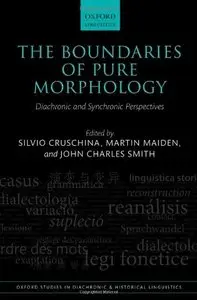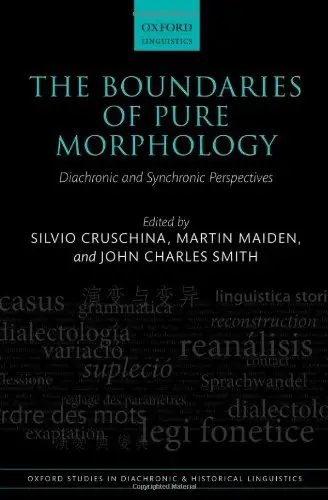The Boundaries of Pure Morphology: Diachronic and Synchronic Perspectives (Oxford Studies in Diachronic and Historical Linguistics) by Silvio Cruschina, Martin Maiden, John Charles Smith
2013 | ISBN: 0199678863 | English | 352 pages | PDF | 2 MB
2013 | ISBN: 0199678863 | English | 352 pages | PDF | 2 MB
This book brings together leading international scholars to consider whether in some languages there are phenomena which are unique to morphology, determined neither by phonology or syntax. Central to these phenomena is the notion of the 'morphome', conceived by Mark Aronoff in 1994 as a function, itself lacking form and meaning but which serves systematically to relate them. The classic examples of morphomes are determined neither phonologically or morphosyntactically, and appear to be an autonomous property of the synchronic organization of morphological paradigms. The nature of the morphome is a problematic and much debated issue at the centre of current research in morphology, partly because it is defined negatively as what remains after all attempts to assign putatively morphomic phenomena to phonological or morphosyntactic conditioning have been exhausted. However, morphomic phenomena generally originate in some kind of morphosyntactic or phonological conditioning which has been lost while their effects have endured. Quite often, vestiges of the original conditioning environment persist, and the boundary between the morphomic and extramorphological conditioning may become problematic. In a series of pioneering explorations of the diachrony of morphomes The Boundaries of Pure Morphology throws important new light on the nature of the morphome and the boundary - seen from both diachronic and synchronic perspectives - between what is and is not genuinely autonomous in morphology. Its findings will be of central interest to morphologists of all theoretical stripes as well as to all those concerned to understand the precise nature of linguistic diachrony.



